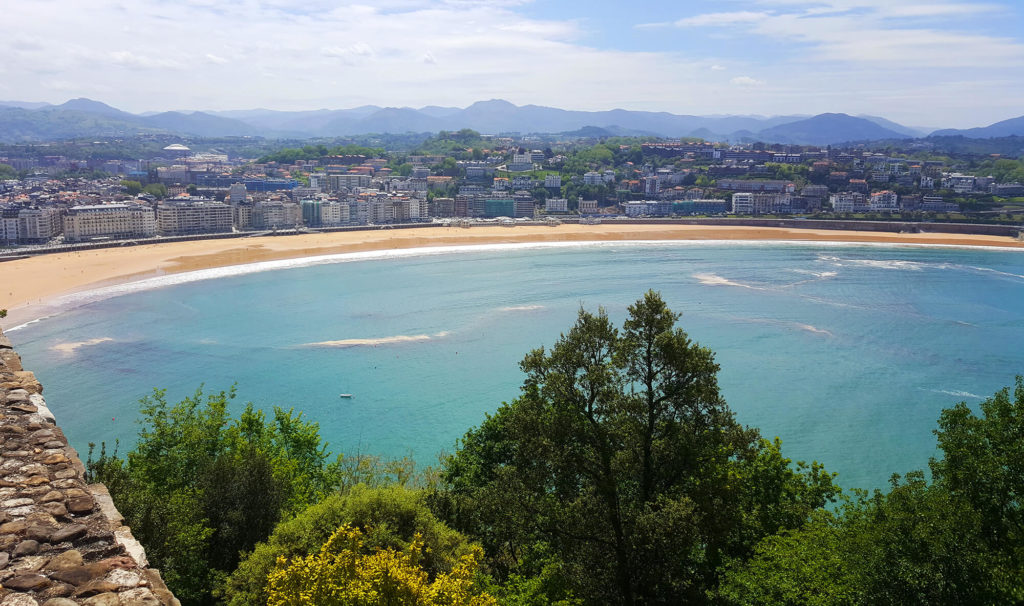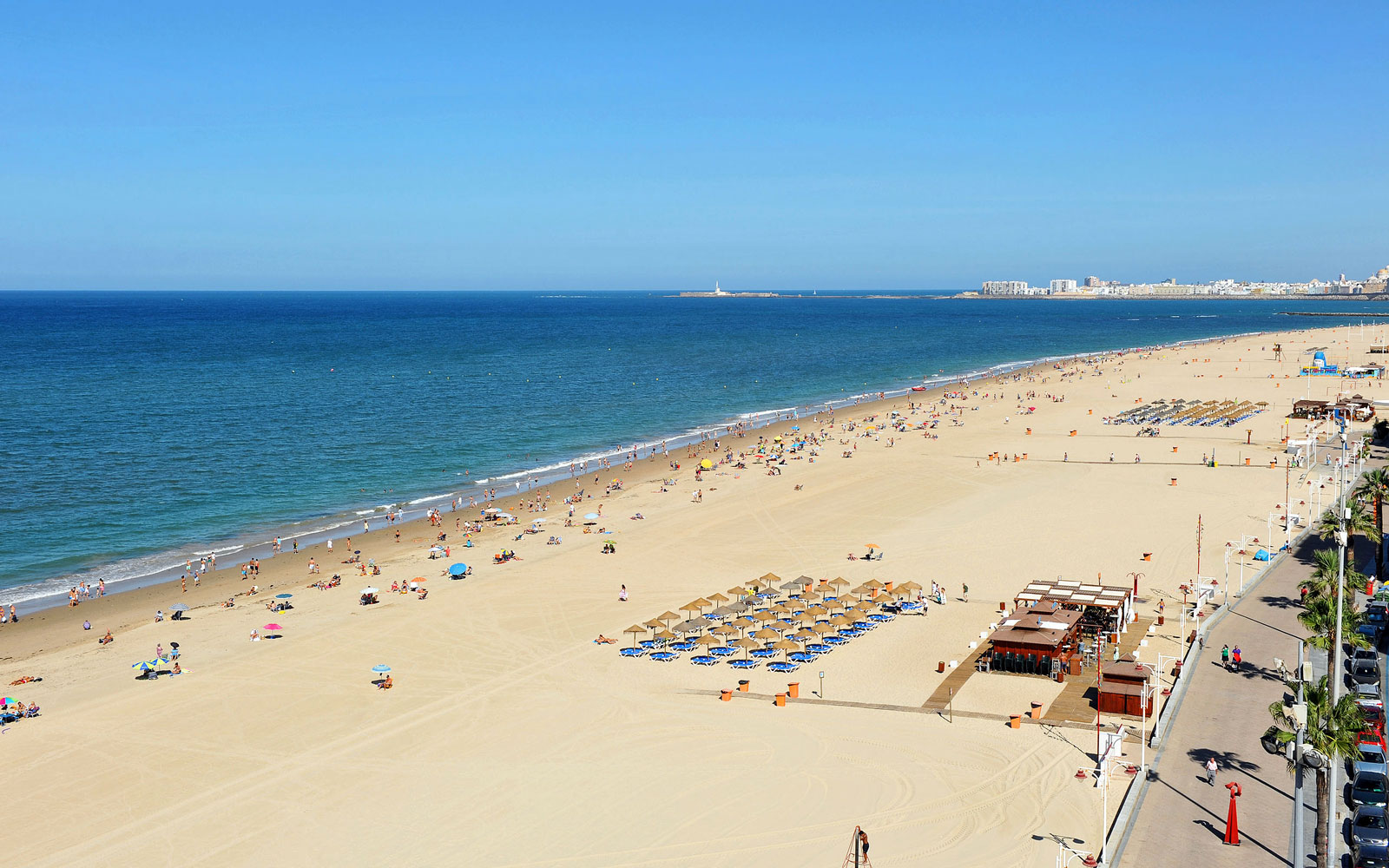Spain is a prominent European vacation destination known for its rich culture and gorgeous natural environment; its beaches attract travellers eager to unwind in the sun during their vacations. Spain’s coastline is as diverse as it is gorgeous, with so many beaches and a diverse range of landscapes. Spain boasts a nearly 3,000-mile coastline, much of which is bordered with beautiful beaches. Every coast of the country is lined with beautiful beaches.
Nevertheless, not all beaches are created equal, and simply because one is well-known does not mean you will enjoy it. If you’re planning a summer vacation to Spain, knowing which beach is perfect for you and your travel companions can help transform your trip from “excellent” to “unforgettable.”
Praia da Rodas, Galicia

This beach is one of those incredible spots that you will never forget once you’ve visited. Praia da Rodas is a stunningly magnificent beach with a flawlessly curled sandy crescent that could be one of the best in the world. Praia da Rodas is a romantically lovely expanse of powdered sand located in Galicia along the more untamed Atlantic coastline.
The water is a brilliant turquoise, clear, and tranquil, despite being somewhat cold in comparison to the Mediterranean. Spend long summer days lounging on the beach, admiring the majesty of the surrounding nautical scenery; dine on delicious seafood provided on the beach; and then spend the night beneath the stars at a nearby campground.
La Concha Beach aka La Kontxa, San Sebastian

San Sebastián’s iconic seashell-shaped La Kontxa, popular with both inhabitants and visitors, is one of the world’s most famous urban beaches, rivalling Rio de Janeiro’s Copacabana and Barcelona’s Barceloneta. La Kontxa is centrally located in the Spanish Basque Country’s food lovers’ capital of San Sebastián, and is named for the peculiar crescent, or seashell, form of gorgeous Kontxa Bay (the Basque term kontxa, or concha in Spanish, translates as seashell.
The beach, with just under a mile of white sand, is extraordinarily vast, and despite the fact that it attracts everyone from locals and tourists to families with small children, senior couples, and groups of friends, it is rarely crowded–even during peak season. The water at La Kontxa is almost always calm, protected from the elements on one side by Urgull hill and Igueldo hill on the other, and facing Santa Clara island across a short stretch of water, making it an ideal location for swimming, sunbathing and canoeing.
Tossa de Mar, Costa Brava

The Costa Brava area, located on the Catalan coast in northeastern Spain, offers rugged beauty (the term meaning “hard coast”), with many tranquil beaches surrounded by steep cliffs. Apart from the beaches, it’s a fantastic section of Spain to visit for sightseeing, as it’s rich in history and culture.
Tossa de Mar is a charming seaside village located halfway between Barcelona and the French border. It boasts a lovely, curved beach, as well as a large castle on the hill above the beach. The beach is gritty and dark golden brown, and the bay has been roped off for swimming.
Aside from the gorgeous beach, there are various natural parks and Roman ruins in the region.
Es Pujols, Formentera

Ibiza’s adjacent island, Formentera, in Spain’s Balearic Islands area, is significantly more lovely and quiet than Ibiza. The ferry voyage between the islands takes around 30 minutes and transports you back and forth.
Es Pujols Beach, for example, has both brilliant white sand and lovely blue-green water. The beach is flanked by a promenade packed with cafés and restaurants, and beyond the beach is a bustling town.
In Es Pujols, the Castavi Apartments are just steps from the beach. The units are spacious and include full kitchens, as well as an outdoor pool. It is a fantastic location for sightseeing around the island, in addition to being close to the beach. The facility contains a small snack bar and a front desk with staff available 24 hours a day to assist with activities and excursions.
Maspalomas, Gran Canaria

Maspalomas Beach, in the southern part of Gran Canaria, is a sophisticated and fashionable beach that is all about the sand. Maspalomas is bordered by a desert landscape of massive sand dunes that will make you feel like you’re soaking up the sun in the Saharan desert rather than along a Spanish shoreline, with a 6-kilometer expanse of golden sand that is astonishingly 100 metres wide at some parts.
The yellow of the dunes contrasts beautifully with the sparkling blue of the water, while beachgoers snooze on sunloungers and shops serve food and soft drinks further along.
This is a nice beach for families to spend time together because there is plenty of room. If sunbathing for hours isn’t your thing, you can rent a pedalo or a jet ski and go on a marine adventure.
Playa de la Victoria, Cádiz

The most well-known urban beach in the Andalusian city of Cádiz is Playa de la Victoria, which is located on Spain’s so-called Costa de la Luz (Coast of Light). It’s in a handy location in the city’s modern area, about a 15-minute walk from the historic core. The sparkling blue, chilly Atlantic ocean of Playa de la Victoria provides a welcome break from the burning heat that suffocates the south of Spain during the summer months. Even though the breakers have been known to get very rough in some sections, the vast, golden sand beach is extremely popular with families.
Meanwhile, the nearly two-mile-long boardwalk that runs alongside it is home to a seemingly endless number of beach bars, or chiringuitos, serving fish specialties like grilled sardines and locally caught tuna and shrimp, as well as countless wine and cocktail bars that stay open until the early hours of the morning.
Playa del Ingles, Canary Islands

The beaches of the Canary Islands must be included in any list of Spanish beaches. These islands are nearly 60 miles (95 kilometres) off the coast of Africa in the Atlantic Ocean, and are another Spanish territory.
On Gran Canaria, Playa del Ingles is an approximately seven-mile-long (11-kilometer) wide sandy beach that gradually transforms into lovely dunes. In the 1960s, it was a favourite hippy hangout, but now it’s home to upscale boutique hotels and gastronomic restaurants.
The beach is golden brown in color and softly dips down to the sea. Many beach clubs rent beach chairs and umbrellas, as well as having their own fenced-in areas.
Playa de Bolonia, Tarifa

Playa de Bolonia is a peaceful beach that is part of a small traditional fishing community that also has the ruins of the Roman city of Baelo Claudia, which date back over 2,000 years. The beach, which is famous among many Spaniards, is also gaining popularity among international tourists, but it still manages to remain a hidden gem of a beach; the area is actually within the Estrecho Natural Park’s boundaries.
The town hasn’t experienced much of the highrise construction that many of Spain’s beach communities have seen, so it’s still underdeveloped and wonderfully old fashioned. With Tarifa being the centre of Spain’s kitesurfing industry, Bolonia has a small, laid-back surfing culture with a couple of surf schools and small pubs catering to visitors.
Playa de Bolonia, on the other hand, remains a peaceful haven for beachgoers. The sand is powdery white, and the bay’s sand dunes shelter the vegetation that develops; here, you may locate a space among the dunes and rest in the peace and quiet of this best-kept-secret beach.
Almunecar, Costa Tropical

There is a much better balance between development and natural beauty preservation. Almunecar, the main resort, resembles a coastal town in the south of France. A long, curving beach is framed by a promenade and boulevard lined with shops, restaurants, and hotels. There is also a row of largely eateries along the shore.
The beach features smooth white sand, and the water is rather warm, especially in the summer. Beach chairs and umbrellas can be rented at a variety of sites, as well as fenced-in exclusive beach club sections. It’s a great beach for families and individuals who wish to spend some time in the ocean. During the summer, swimming areas are roped off and lifeguards are on duty.
Aside from the seashore, the Andalusia region is home to magnificent and historic Spanish cities such as Seville and Granada.
Playa Las Arenas, Valencia

Given that Las Arenas literally means “the sands,” it’s no surprise that the beach has been gifted with gorgeous golden sand. It was originally known as Playa de Levante or Playa del Cabaal, but it was renamed Las Arenas after the ultra-exclusive Balneario Las Arenas spa, which opened in 1898 as a treatment centre for wealthy Spanish families who came to take wave baths. Swimming of all ages and levels, as well as windsurfers and sailors, will enjoy the quiet and shallow water. Meanwhile, bars and restaurants line the wide, busy promenade that runs alongside the big beach.
Don’t miss out on a chance to sample one of Spain’s national foods, seafood rice, or paella, which originated in Valencia, despite purists arguing that a true paella Valenciana should have chicken or rabbit and green beans rather than shellfish. At La Pepica, you can try both versions and make your own decision.

